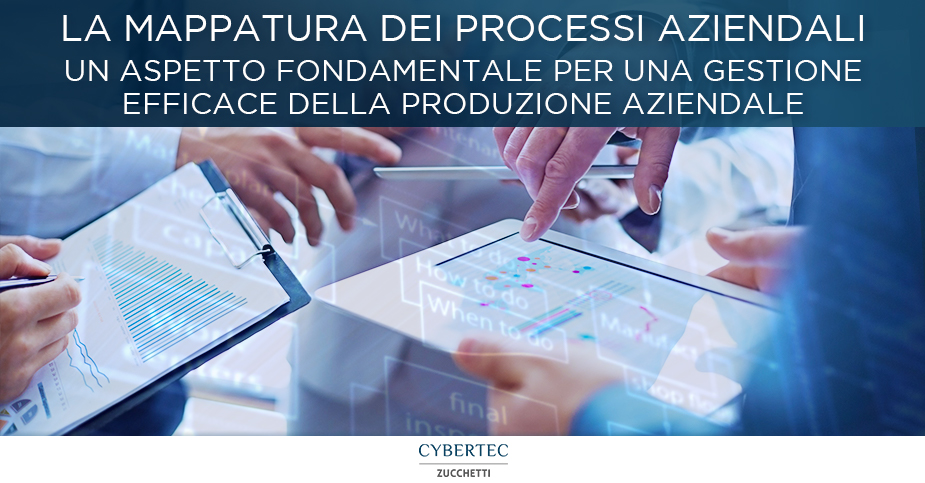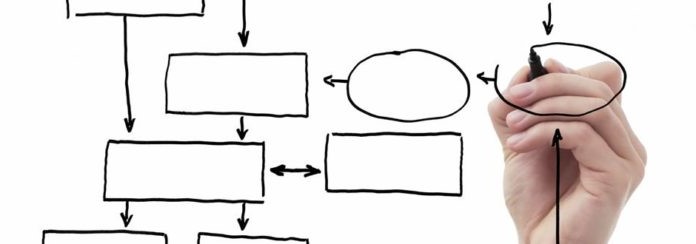Defining precisely the various processes and sub-processes, and the links between them, is essential to have a clear picture of the company’s activity, the resources used, and the dynamics put in place. Once these elements are learned, understanding how to optimize processes and make the company more productive becomes much easier.
What are business processes
The term “process” comes from Latin and has the meaning of proceeding, in the sense of transformation. In particular, thereare several definitions of “business process”, among which there are two that deserve to be mentioned:
- “Sequence of logically interrelated activities in order to manage a resource during its life cycle and achieve a specific objective. Where by activities we mean an aggregation of elementary operations ” (Toscano – 1993).
- “A structured and monitored sequence of activities, designed to produce a specific output for a particular customer or market” (Davenport – 1993).
In both cases, it can therefore be said that processes are the basis of a company’s operating mechanisms.
The process can be imagined as a system, a box, which: receives inputs, does things and finally generates the required output. These “things” are intended to add value to the input. To do this, they bring about transformations that follow a logical order and a well-defined time sequence.
It can therefore be said that a business process, or business process, is a set of activities, dependent on each other, aimed at a specific objective. A business process is predictable, reliable and repeatable and must generate a result.
The elements of business processes
The business process consists of elements that distinguish it, namely:
- Input: physical and informative elements entered in the transformation;
- Output: result of the transformation;
- Suppliers: subjects or entities (internal or external) that provide the input;
- Customers: subjects or entities (internal or external) that receive the output;
- Resources: tangible or intangible elements that the company uses to carry out the process;
- Measurements: measuring points of key elements with respect to established standards or objectives;
- Objective: why the process is created;
- Constraints and rules: conditions to be respected to meet the objectives.
Why Map Business Processes
Often the mapping of business processes is done to have full control of what happens in the company; to improve business processes, however, it is enough to follow some rules.
ANALYSIS AND METHODOLOGY FOR PROCESS MAPPING
Process mapping includes the set of techniques used to identify and represent the components of processes
First of all, it is necessary to define:
- Input
- Activities (precisely define the individual activities and their sequences)
- Output
- Decision Points and Alternatives
- Organisational units
- Other elements depending on the purpose of the mapping (procedures etc.)
OBJECTIVES OF MAPPING A BUSINESS PROCESS
Here is what allows us to obtain an adequate mapping:
1) provide a summary representation of the company’s business (from a decision-making, operational-management, organisational and administrative point of view)
2) design the organisational system, clarifying responsibility for the activities
3) design the process-level control system to determine what to control and how
4) design the computer system (e.g. after identifying the users of the process, the tasks (activities) and how to carry them out, I create IT interfaces for the various users; then it is necessary to define what the necessary data are, from where to acquire them and how, to establish accesses)
Porter’s Value Chain
A process is therefore designed to produce a specific product or service for the specific market or customer, but not all processes are equally important within the company because the objectives, in fact, are different. In this sense, Michael Porter’s value chain describes the organization as a limited set of processes. This model was theorized by Michael Porter in 1985. The model sees a company as the set of 9 processes: five primary processes, or activities, that produce a direct result perceptible by the customer and four support processes, or activities, that provide essential service activities, but not always perceptible by the customer. The lower the cost of managing these processes, the higher the margin on the final product or service.
Porter’s Value Chain (Source: Wikipedia)
Anthony’s Pyramid
Each business process has its own objective and each objective has a different time length. For this reason, another way to classify processes within the organization concerns management objectives. The model that uses this criterion is the so-called Anthony pyramid (or triangle). According to Anthony, the author of the pyramid of the same name, three different levels of management objectives of different time length and therefore of different importance can be identified, where by importance is meant the extent to which they can influence company behaviours:
- Executive processes: The highest level is the strategic (or executive) one that has long-term objectives and is responsible for deciding the fate of the company.
At this level we find medium-high level managers who make strategic decisions for the company (such as defining the strategy, opening new markets, etc.). - Management processes: At the second level we find the medium-term tactical one that receives the directives of the higher level, organizes them and transmits them to the next level, the operational one. Responsibilities are assigned to “base” level managers who make decisions on ordinary operational management activities (such as resource allocation, production scheduling, etc.).
- Operational processes: The third level is the operational one, in the short term, which creates and sells the company’s products and services to customers. At this level there are employees who act operationally, such as production, logistics, human resources, etc. The activities present at this level are more easily configurable as processes and representable in a defined way.
The business process map
Once all the company’s processes have been identified, we can proceed to the next phase, namely the elaboration of the process map. The map joins all the processes together, representing them graphically. To elaborate the process map it is necessary to know all the possible connections, in addition to the inputs (resources) necessary for the realization of the output (final product). Process maps are not always the same but must adapt to the structure of individual companies. In order for the process map to be efficient and serve its purpose, it is necessary that:
- The information is clear and concise;
- All processes are indicated;
- The links between processes are expressed in a precise and linear way;
- The activity groups to which the processes belong are precisely identified.
If the process map has these characteristics, then it is an irreplaceable tool for organisation, optimisation and growth for the company.
Examples of business process mapping
There are different types of maps, with specific characteristics for different needs, which can be used to map a business process.
For example, document mapping highlights the detail of what the department needs to carry out its work and what the end result should look like. It is therefore a kind of guide to the variables and decisions that can affect the activity.
Mapping high-level processes, on the other hand, means listing a company’s objectives and the departments involved in achieving them through structured renderings and flowcharts. Schemes of this type are usually used by company management to plan operations at a higher level.
Finally, maps that relate to the flow of value and activities allow us to illustrate, analyse and improve the phases necessary to convey a product or service to the end customer. These maps are a useful tool for identifying and eliminating waste of time and for increasing productivity.
These examples can help to clearly understand what resources and skills are needed to carry out a process, who is in charge of working on what and at what time.
Mapping of business processes and software
The implementation of APS software allows the company to better analyse its production department. In fact, a sort of digital twin of the supply chain is created that allows you to better analyze its operation.

